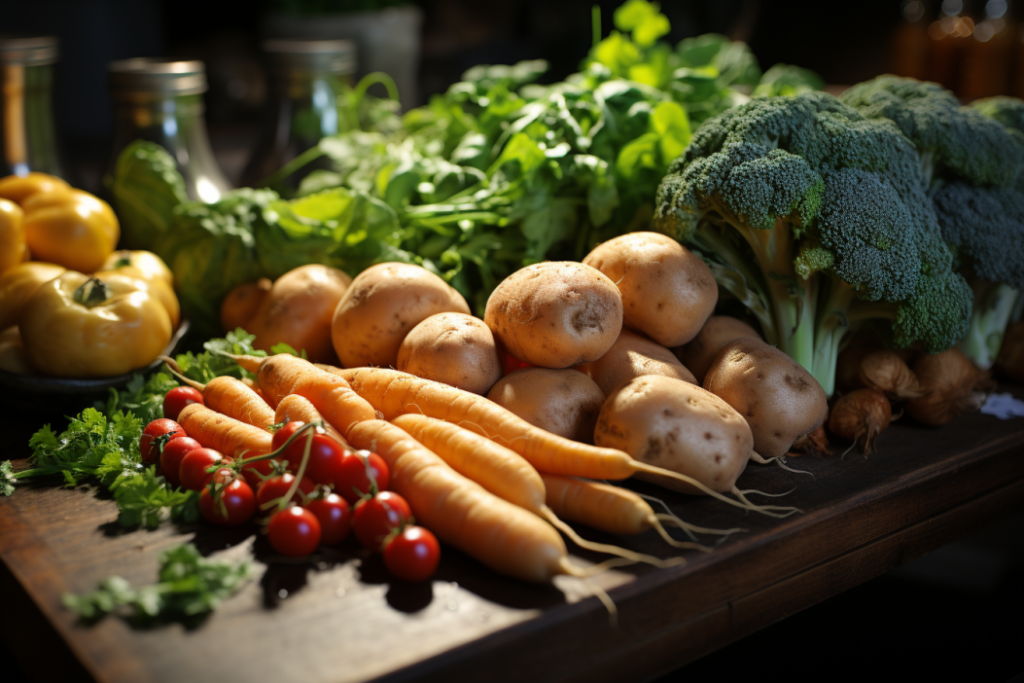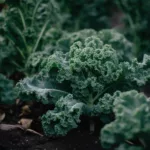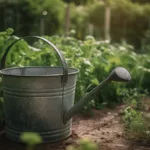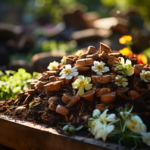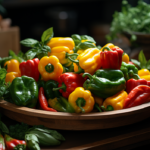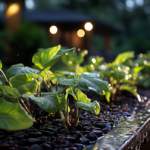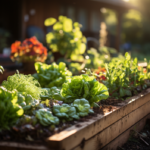Table of Contents
Unlocking the Successful Growth of Root Vegetables in Your Own Backyard
Hey there fellow green thumbs! Who doesn’t love pulling up a fresh carrot or beet straight out of their own backyard? Root vegetables are not just tasty and nutritious but also super fun to grow at home. Trust me, once you start growing these underground treasures, you might wish you’d started sooner. Whether you’re a seasoned gardener looking to dabble in something new or a beginner considering your first crop, root vegetables could be your new passion. This blog post is going to delve into the magic of growing root veggies in your own home garden. We’ve got you covered with top-notch tips and tricks because, let’s face it, these veggies are a bit mysterious – after all, all the exciting stuff’s happening underground! But don’t worry, we’re about to make it as clear as a sunny day in your garden patch. So read on to unlock the secrets to get your beets beet-ing and carrots carot-ing in no time!
Choosing the Right Root Veggies for Your Garden
Hey there, dirt diggers! Now, deciding on the type of root veggies you want to plant can seem daunting. But worry not, we’re here to make this decision as straightforward as a stick in the mud.
Take into account your climate and soil type.
Some root veggies, like potatoes, radishes and turnips can withstand a chill, whereas others like sweet potatoes and ginger need a bit of the tropical heat. Additionally, the majority of the root veggies are fans of loose, well-drained soil. That’s why carrots and parsnips love sandy soil.
Consider the space you have.
Root vegetables vary in size and space requirement. Radishes and carrots can be grown in a smaller patch while potatoes need a bit more room to spread their roots.
Don’t forget your personal culinary preferences!
There is no point in growing a surplus of turnips or beets if no one in your family is a fan of their flavor. Get those green fingers working on those sweet potatoes if a warm spud is what gets you drooling, or those parsnips if a roasted root roast is your winter favorite!
Experiment! We’re all amateurs in the beginning.
Trial, error and a sense of wonder are what gardening is all about. Don’t shy away from growing something unusual like kohlrabi or celeriac. Who knows, these underdogs might take you on a flavorful journey!
Choosing the right root veggies for your garden is a combination of taste, practicality and fun. So why wait? Get your gardening gloves on and start digging into the wonderful world of root veggies. Your dinner plate and your body will thank you!
Site Selection and Soil Preparation: Laying a Good Foundation
What’s up, plant pals? Choosing the perfect location and prepping your soil is like laying down the red carpet for your root veggies. It’s the unsung hero of a bountiful harvest, so let’s dig into this and give it the attention it deserves!
Spotting the Best Spot.
Most root veggies are staunch sun-bathers—they need about 5-6 hours of sunlight each day to grow well. Whether it’s a raised bed, garden plot, or even a container, make sure it’s in a sunny area!
Soil Matters—a Lot!
Getting your soil in tip-top shape is crucial. Root veggies like loose, well-draining soil; they’re not fans of heavy, compact clay. Think about how they grow—pushing down and out—it’s a lot easier in loose soil. Adding compost is like giving your soil a healthy meal—it not only improves texture but also supplies nutrients.
Get the Right pH.
The pH of your soil can be the difference between “meh” and “wow” when it comes to your harvest. Most root veggies prefer slightly acidic to neutral pH (6.0 to 7.0). You can test your soil using an inexpensive soil test kit — no need for fancy equipment!
Avoid Rocks and Obstacles.
Ever seen a picture of a deformed carrot? It probably hit a rock or another obstacle in its growth track. So, clear any debris or large rocks from your soil before planting.
To sum it up, your site selection and soil preparation are like setting up a comfy, cushy, luxury suite for your root veggies. Get these right, and you’re setting the stage for a grand performance by your beetroot, carrots, radishes and more! Remember, the better the start, the better the harvest.
Planting Techniques to Maximize Your Root Vegetable Growth
Hello, garden gurus! Let’s talk planting techniques. From sowing seeds to transplanting seedlings, the way you plant your root veggies can seriously boost your harvest. So, let’s get those seeds rollin’!
Sow Directly, Not Indirectly!
Most root vegetables prefer to start and finish their lifecycle in the same location. Transplanting can disrupt their growth and result in some odd shapes. So save yourself the hassle and sow the seeds directly in your garden.
Spacing is Key!
Plants need room to breathe and roots need room to grow. Crowding your root veggies could lead to underdeveloped roots. Follow the spacing guidelines on your seed packet.
Planting in Rows or Blocks?
Traditional rows aren’t your only option. Planting in blocks can maximize space, particularly for smaller root veggies like radishes. It’s also easier to protect them from pests when they are in groups!
Planting Depth—Don’t Go Overboard!
How deep should your seeds go? Again, check the seed packet. A general rule is planting seeds three times as deep as their diameter. With root veggies, shallow is better than too deep.
The Power of Succession Planting.
Want a steady supply instead of a single big harvest? Lo and behold—succession planting! Plant new seeds every 2-3 weeks, and you’ll have fresh root veggies throughout the growing season.
With these tips under your belt, you’re well on your way to a booming treasure trove of root veggies. Your garden will be brimming with colorful carrots, beaming beets, and radiant radishes before you know it! So, dig in, plant right, and have fun watching nature’s underground magic happen!
Care and Maintenance: How to Nurture Your Underground Gems
Hi there, root rangers! Keeping your veggies healthy as they mature is just as important as planting them right. Let’s dig into some tips on watering, mulching, and fighting off those darn pests, so you can grow veggies that are not just alive, but thriving!
Watering—It’s a Balancing Act!
Too little water, and your veggies might come out smaller and tougher than usual. Too much, and they risk rotting underground or splitting. As a rule, root veggies like a good 1 inch of water per week, but don’t let them sit soggy.
Mulch Matters.
Mulching is like a facial for your veggies—it keeps them cool, prevents water from evaporating, and blocks out pesky weeds. Organic mulch like straw or wood chips is fantastic as it breaks down and feeds the soil.
Don’t Let Pests Have a Party.
Root veggies have their fair share of enemies, from root maggots to wireworms. Interplanting with other crops, rotating where you plant, and keeping your garden clean can help avoid pest problems.
A wilted or yellowing top could be a sign that the veggie down under is good to go or that something’s off. It’s good practice to check one or two to gauge their progress and health.
The Soil Lever technique.
Avoid pulling your veggies out too forcefully—you might break them. A gardening technique called the ‘soil lever’ technique can be really handy. Use a garden fork, stick it in the soil next to your plant and gently lever the soil to loosen it. The veggies come out much easier!
These caring measures might seem like extra work, but trust me, when you’re pulling up plump, juicy produce from beneath your soil, you’ll be beaming with pride. So, get out there, care for your buried beauties and watch them thrive!
Harvesting and Storage Tips for Your Homegrown Root Veggies
Hey, budding botanists! After all that planting, care, and watering, it’s finally time to see what lies beneath the soil. This is the moment we’ve all been waiting for—harvesting! And then ensuring your bounty stays good for later, so let’s explore!
Knowing When to Harvest
Harvest time varies by vegetable, but generally, if the tops of your plants are lush and the veggies are about the size they should be, it’s time to wield your garden fork. Some, like the versatile carrot, can be harvested at baby stage or fully mature depending on your preference.
Proper Harvesting Makes a Difference
Remember the ‘soil lever’ technique to prevent breaking? For smaller veggies like radishes, you can gently pull. Twisty, broken, or split veggies invite bacteria, which could ruin all your hard work, so handle with care.
Storing – Your Veggies’ Second Life
Most root veggies store well in a cold, dark place (like a fridge or cool basement). Leave some dirt on; it actually prolongs shelf-life. For beets, carrots, and similar, remove the leaves but leave about an inch—this prevents the roots from drying out. As for potatoes—the complete darkness is your best ally here to prevent them turning green (and funky tasting!).
Freezing and Canning – Going beyond Basics
Some root vegetables, such as carrots and parsnips, freeze well once they’re blanched. Others, like beets and potatoes, can be canned. Yep, these techniques require a little more effort, but it’s worth it to savour that homegrown taste throughout winter!
Harvesting and storing home-grown root vegetables can be as rewarding as growing them. It’s a delightful cycle of sowing, growing, reaping, and then enjoying your bounty in countless delicious meals. So, put on your gardening gloves, gear up with the right info, and dig into the joy of growing root veggies at home!
Troubleshooting: Common Issues and How to Solve Them
Hey, root warriors! Even the best gardeners face a few bumps along the road. Pesky pests, mysterious diseases, damn-weather damage—the list goes on. But don’t let these rob you of your gardening joy! Here are solutions to some of the most common issues you might face.
Pests—the Uninvited Guests.
Root maggots, wireworms, nematodes—they all seem to love the yumminess of root veggies as much as we do! The solution? Crop rotation, organic pesticides, or inviting beneficial insects to your garden who love munching on these naughty pests.
Oddly Shaped Veggies.
Bumpy, twisted or split roots might look odd but usually taste just as good. Uneven watering often causes cracks or splits while bumpy, twisted roots can be due to rocky soil or pests.
Rotten or Mushy Roots.
Overwatering, poor drainage or soil-borne diseases can lead to rotten roots. Plant in well-draining soil, water appropriately, and if disease is the issue, use disease-resistant varieties next time.
Yellowing or Wilting Veggies.
Either your veggies have had their day under the sun and it’s time to harvest, or something is off. Could be pests, disease or nutrient deficiencies—investigate and then respond accordingly.
Fading or Dwarfed Veggies.
If your root veggies are looking wimpy, it could be due to low light. Most root veggies love a good amount of sunshine; so ensure they’re getting at least 5-6 hours of sunlight. Another culprit could be poor soil nutrition—make sure your soil is well-fed and fertilized.
Remember, the best gardeners are the ones who learn from their mistakes and failures. So, on your journey to becoming a root vegetable whisperer, don’t let a few hiccups get in your way. These solutions will put you back on track for a successful root vegetable harvest. Now let’s get digging, brave gardeners!
Cooking with Root Vegetables: Bringing Garden Freshness to Your Table
Hello, culinary gardeners! Let’s take that bounty from your garden to your kitchen. Root veggies shine in the culinary world thanks to their versatility and unique flavors. Whether it’s a simple salad or a gourmet main dish, they can do it all. So, let’s dive in!
Raiders of the Raw Veggies.
Many root vegetables like carrots, radishes, and turnips are delicious raw, adding a wonderful crunch to your salads or as a part of a healthy snack. Ever tried beetroot hummus or some home-made carrot slaw? Oh, you’re in for a treat!
Roasting – The Comfort Food Star
Slow roasting makes root veggies crispy on the outside, meltingly tender on the inside and brings out their natural sweetness. Believe me, a tray of roasted beetroots, parsnips, and sweet potatoes could be a showstopper at your dinner table!
In a Soup or Stew Simmering Slowly
Nothing beats the winter blues like a bowl of comforting soup or stew, chock full of colorful root veggies. Think a traditional chicken noodle soup but switch noodles with parsnips. Or a hearty beef stew with loads of turnips and carrots.
Pickled, Canned, Jellied and More!
Pickling is a fantastic way to preserve your root veggies and give them an entirely new flavor profile. Fancy some beetroot pickle or a side of carrot and daikon pickles with your burger?
Growing root veggies is not just about the countless benefits and growing experience, but also the sheer joy of taking garden-fresh, homegrown produce to your kitchen and creating culinary masterpieces. After all, the beauty of the root veggies lies in their ability to go from garden to table, offering a wholesome, earthy, and refreshing taste on your plate. Your kitchen is now an exciting extension of your garden adventure!
Conclusion
Well, green thumbs, we’ve unearthed the wonderful world of root vegetables, from planning and planting to pampering and plate. We’ve dug deeper into their mysterious underground life, gave valuable tips to nurture and care for them, and explored means to tackle problems that might pop up—quite literally. We also dove into the delightful culmination—harvesting and storing, and finally, feasting on our hard-earned underground bounty!
These buried treasures provide a fantastic opportunity to enhance your gardening skills, experience the joy of growing your own food, and create marvelously delicious meals. More than just a gardening venture, growing root veggies is a journey that we undertake—one that binds us closer to the earth and helps us respect the natural processes of growth, patience, and harvest.
So, whether you’re a seasoned gardener or a beginner, why not take a step towards exploring this underground realm of gardening? We’re certain your root veggies journey will be an enriching one, for you and your soil! And hey, a bountiful harvest of colorful beets, crunchy carrots, and delicious potatoes is surely a prize worth digging for! Happy gardening!

